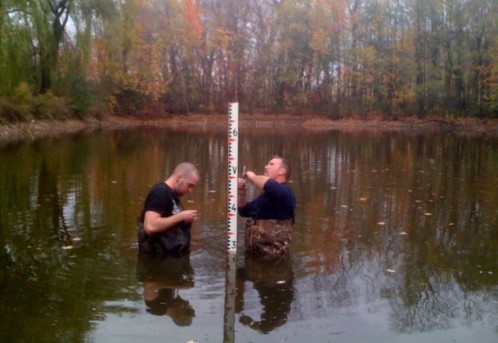One would think that the time when gliders were considered cutting-edge technology for science would have long passed. Yet this durable technology remains at the forefront of research, even today.
Where daredevil pilots once pushed the boundaries of engine-less flight into the upper reaches of the troposphere to study mountain waves, now the Perian Project looks to send its pilots into the stratosphere–30,000 meters up–in the extreme reaches of mountain-perturbed winds. With a special glider that has a pressurized cabin, organizers of the Perian Project hope to double the world’s sailplane altitude record that they set in 2006 with a different sailplane.
Elizabeth Austin of WeatherExtreme, Ltd. (of Fallbrook, California), the forecast provider for the Perian Project, will speak at the AMS Annual Meeting (Monday 23 January at 5 p.m.) about the high-altitude sailplane flights. Tests of the new, Phase 2 glider will begin in 2012 in California. Austin writes,
This two-seat sailplane is a one-of-a-kind, carbon fiber, pressurized sailplane that will utilize the polar night jet associated with the polar vortex to achieve an altitude of 90,000 feet (27.4 kilometers). The phase two glider has a wing span of 84 feet and will weigh 1,800 pounds loaded with two pilots and equipment. The windows are polycarbonate and do not get brittle at low temperatures. A special drogue chute is being designed that will not degrade rapidly with high levels of ozone exposure.
While piloted sailplanes are basically an extension of the daredevil mountain-wave research that’s been going on since before World War II, robotic devices have also recently been extending the art of research gliding far into the oceans.
You may remember that the cover of the August issue of BAMS featured an underwater glider as part of the article on the Alaska Ocean Observing System. At the upcoming Annual Meeting will be several oceanographic presentations involving the use of ocean gliders–for example here for P. Chu and C.W. Fan on thermocline measurements (Monday, 11:30 a.m.) and here for Phelps et al. on conditions for Arctic ice concentrations (Tuesday, 9:45 a.m. poster session).
Thanks to an open-source contest by Liquid Robotics, Inc., you don’t have to wait for the Annual Meeting to find out what it’s like to use the latest robotic gliders in oceanographic and meteorological observing. As a demonstration of robotic gliders powered by wave action, the Sunnyvale, California, company is launching four of its remote controlled craft in San Francisco on 17 November. Their goal: to cross the Pacific Ocean while collecting a variety of oceanic and atmospheric parameters.
The company is calling this record-breaking robotic the PacX Challenge and it involves a prize for the scientist–that could be you!–who comes up with the best use of the data streaming back from the robots as they make their way westward and, hopefully, avoid sharkbite (which has happened to one of the company’s gliders in the past).
The gliders (featured in today’s New York Times), only move at about one knot or so, and will split into pairs in Hawaii. In about 300 days, one pair is expected to reach Japan; the other pair, Australia.
While at sea, the Wave Gliders will be routed across regions never before remotely surveyed and will continuously transmit valuable data on salinity and water temperature, waves, weather, fluorescence, and dissolved oxygen. This data will be made available in near real-time to all registered individuals.
Oceanographic organizations already planning to use the data gathered during the Pacific crossing include Scripps Institution of Oceanography, Woods Hole Oceanographic Institution, and the Monterey Naval Post Graduate School.
If you submit an abstract by 23 April 2012, you can design a scientific mission for the gliders and hope for this:
The grand prize winner will receive six months of free Wave Glider data services and will work with Liquid Robotics to chart the course and mission for the six month deployment, including configuration of onboard sensors.
Not a bad way to let robots do the work for you.

